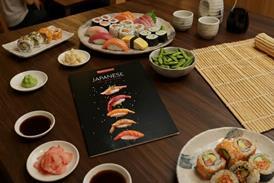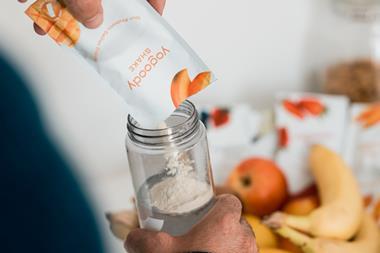After years of slow decline, it looks as though butter is biting back. The joint venture between the manufacturers of the two leading brands, Lurpack and Anchor, and the popularity of spreadable butters among consumers, have increased hope that butter might re-assert itself within the overall yellow fats market.
But there is still a long way to go. Although Lurpak Spreadable is now the top-selling individual yellow fats product, according to Taylor Nelson Sofres Superpanel, butter makes up only 37.6% of the market. Only three out of the 10 best selling products are butters.
Despite this, there is confidence that the creation of Arla Foods Fonterra by Arla Foods and New Zealand Milk will raise the profile of butter. The new organisation's senior category manager Marcus Farthing says: "Without a doubt, the profile will rise, but also the general profile of butters, spreads and margarines.
"The joint venture gives us an even stronger platform from which to deliver category-building initiatives," he added.
The venture is also likely to stimulate new product development. Danny Micklethwaite, senior brand manager for Lurpak, says: "We are looking at the long-term benefits of developing the brand and will be looking to launch new products in the future."
Like other brands within the Arla Foods Fonterra stable, Lurpak will receive heavyweight marketing support over the next year  £14m will be spent in the year starting in October on supporting Lurpak Spreadable and the Lighter version of the product, which has 25% less fat.
The activity includes TV advertising featuring Douglas the Butterman, along with sampling activity, point of sale material and direct marketing.
Anchor, too, will benefit from large-scale marketing and a year-long £7.2m national TV and press advertising campaign started on August 5 with a two-month burst. This is being backed up by a sampling campaign intended to reach 1.1 million people in the Central TV region.
The campaign will run in Asda, Safeway, Sainsbury and Tesco stores and will offer 10p money-off next purchase vouchers.
The television advertising is aimed at young families and will support the spreadable product, which is growing by 20% a year, while the press campaign will cover the entire Anchor range, including cheese.
Senior brand manager Mikael Horsboll says: "We believe there is a fantastic opportunity to build the brand. In the last couple of years it has been in a defensive position, relying a great deal on price promotion. We will still be doing price promotions, but not to the same degree.
"We will also be moving away from emphasising free range. We will still use that as a support vehicle, but naturally delicious' is now seen as the brand essence."
Those outside the Arla umbrella are also benefiting from the popularity of spreadable butter. The English Butter Marketing Company, 56% owned by Dairy Crest, says its spreadable variant is growing by 131% a year. Overall the company believes that spreadable butter is growing by around 27%.
Support for Country Life includes new packaging introduced in July with the message Freshly Churned' and a press advertising campaign in women's magazines. This started in July and will run through to February. In addition chef Paul Heathcote will be used in a nationwide radio campaign and press advertorials. Mike Buckland, brand manager for Country Life, says: "Research highlighted that our brand credentials were strongly associated with the quality of the butter, made to an English recipe using home-produced, freshly-churned cream. The new packs and the advertising have been developed both to communicate these messages and to give the brand a more contemporary feel."
Kerrygold is also keen to emphasise the purity of the product, particularly its spreadable variant made from 100% butter, unlike many brands on the market which contain a proportion of vegetable fat to make them softer.
The company is using national newspaper weekend supplements, instore publications, women's magazines, trolley posters and six-sheet posters to raise brand awareness. There are also store-level promotions to encourage trial and repeat purchase.
Kerrygold's marketing director Brendan Doyle believes the future for butter looks bright. "The quality of the products and the ongoing above-the-line support, coupled with further market segmentation, will ensure substantial future growth within the sector. Segmentation will come in the form of low fat and unsalted products and variation in pack sizes," he says.
But he believes that consumers need to be given more information about what type of products they are buying in the yellow fats market and how much, if any, butter they contain. Instead they face a "sea of confusion", he says.
"Current labelling regulations governing yellow fats fall well short of their intended objective  ie to provide customers with clear and concise labelling which will give them an opportunity to make an informed choice," he argues.
Sampling is seen as a key weapon by many brands. This is the case with Pr鳩dent from Lactalis, which is available in salted and unsalted variants. In unsalted, it has attained a 15% market share, according to marketing manager Stephen Hull. "We are trying to get the product into customers' hands because we're confident they will like it. Once people have bought it we find it's the type of thing they talk to their friends about."
Lactalis is also involved in the speciality market through brands such as Lanquetot, which comes in a clay pot, and Bridel, which comes with sea salt crystals or in an unsalted organic version. These are proving popular in affluent areas such as the south-east, Hull says. "They create a distinctive proposition on shelf, and are often purchased for a special occasion."
{{Z SUPPLEMENTS }}
But there is still a long way to go. Although Lurpak Spreadable is now the top-selling individual yellow fats product, according to Taylor Nelson Sofres Superpanel, butter makes up only 37.6% of the market. Only three out of the 10 best selling products are butters.
Despite this, there is confidence that the creation of Arla Foods Fonterra by Arla Foods and New Zealand Milk will raise the profile of butter. The new organisation's senior category manager Marcus Farthing says: "Without a doubt, the profile will rise, but also the general profile of butters, spreads and margarines.
"The joint venture gives us an even stronger platform from which to deliver category-building initiatives," he added.
The venture is also likely to stimulate new product development. Danny Micklethwaite, senior brand manager for Lurpak, says: "We are looking at the long-term benefits of developing the brand and will be looking to launch new products in the future."
Like other brands within the Arla Foods Fonterra stable, Lurpak will receive heavyweight marketing support over the next year  £14m will be spent in the year starting in October on supporting Lurpak Spreadable and the Lighter version of the product, which has 25% less fat.
The activity includes TV advertising featuring Douglas the Butterman, along with sampling activity, point of sale material and direct marketing.
Anchor, too, will benefit from large-scale marketing and a year-long £7.2m national TV and press advertising campaign started on August 5 with a two-month burst. This is being backed up by a sampling campaign intended to reach 1.1 million people in the Central TV region.
The campaign will run in Asda, Safeway, Sainsbury and Tesco stores and will offer 10p money-off next purchase vouchers.
The television advertising is aimed at young families and will support the spreadable product, which is growing by 20% a year, while the press campaign will cover the entire Anchor range, including cheese.
Senior brand manager Mikael Horsboll says: "We believe there is a fantastic opportunity to build the brand. In the last couple of years it has been in a defensive position, relying a great deal on price promotion. We will still be doing price promotions, but not to the same degree.
"We will also be moving away from emphasising free range. We will still use that as a support vehicle, but naturally delicious' is now seen as the brand essence."
Those outside the Arla umbrella are also benefiting from the popularity of spreadable butter. The English Butter Marketing Company, 56% owned by Dairy Crest, says its spreadable variant is growing by 131% a year. Overall the company believes that spreadable butter is growing by around 27%.
Support for Country Life includes new packaging introduced in July with the message Freshly Churned' and a press advertising campaign in women's magazines. This started in July and will run through to February. In addition chef Paul Heathcote will be used in a nationwide radio campaign and press advertorials. Mike Buckland, brand manager for Country Life, says: "Research highlighted that our brand credentials were strongly associated with the quality of the butter, made to an English recipe using home-produced, freshly-churned cream. The new packs and the advertising have been developed both to communicate these messages and to give the brand a more contemporary feel."
Kerrygold is also keen to emphasise the purity of the product, particularly its spreadable variant made from 100% butter, unlike many brands on the market which contain a proportion of vegetable fat to make them softer.
The company is using national newspaper weekend supplements, instore publications, women's magazines, trolley posters and six-sheet posters to raise brand awareness. There are also store-level promotions to encourage trial and repeat purchase.
Kerrygold's marketing director Brendan Doyle believes the future for butter looks bright. "The quality of the products and the ongoing above-the-line support, coupled with further market segmentation, will ensure substantial future growth within the sector. Segmentation will come in the form of low fat and unsalted products and variation in pack sizes," he says.
But he believes that consumers need to be given more information about what type of products they are buying in the yellow fats market and how much, if any, butter they contain. Instead they face a "sea of confusion", he says.
"Current labelling regulations governing yellow fats fall well short of their intended objective  ie to provide customers with clear and concise labelling which will give them an opportunity to make an informed choice," he argues.
Sampling is seen as a key weapon by many brands. This is the case with Pr鳩dent from Lactalis, which is available in salted and unsalted variants. In unsalted, it has attained a 15% market share, according to marketing manager Stephen Hull. "We are trying to get the product into customers' hands because we're confident they will like it. Once people have bought it we find it's the type of thing they talk to their friends about."
Lactalis is also involved in the speciality market through brands such as Lanquetot, which comes in a clay pot, and Bridel, which comes with sea salt crystals or in an unsalted organic version. These are proving popular in affluent areas such as the south-east, Hull says. "They create a distinctive proposition on shelf, and are often purchased for a special occasion."
{{Z SUPPLEMENTS }}



















No comments yet